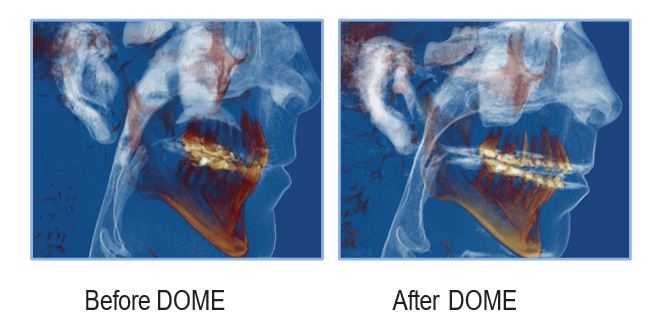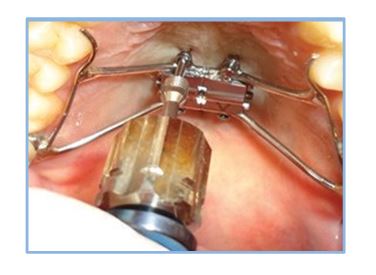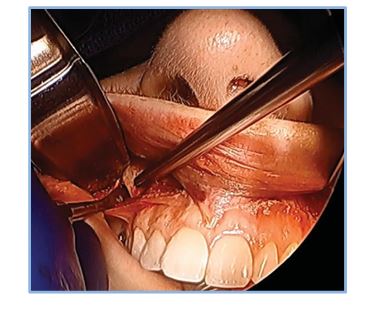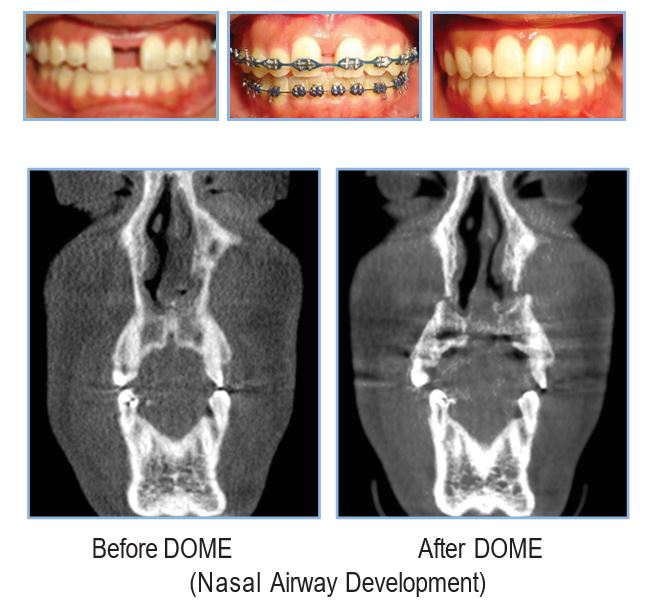DOME in Bellflower
Distraction Osteogenesis Maxillary Expansion
DOME For Obstructive Sleep Apnea
Why DOME?
Distraction Osteogenesis for Maxillary Expansion, affectionately known as “DOME” was pioneered at Stanford to effectively expand the adult maxilla (upper jaw)./p>
While previous maxillary expansion procedures have been known to have unpredictable results, DOME has shown consistent results in improving nasal breathing and providing space for the tongue. These are important contributors to better breathing during sleep.
A narrow, high arched palate can be transformed to a dome-shape palate efficiently with the latest advent in orthodontics and minimally invasive facial bone surgery.

What is DOME?
A narrow maxilla is associated with nasal obstruction, crowded teeth, and hindered facial development. This feature is also a common finding in patients with obstructive sleep apnea (OSA).
For children and young adults, a narrow maxilla may be expanded with customized expanders without surgery as the facial bone remains fairly soft.
For older patients, non-surgical treat- ments are not viable. Fortunately, with DOME, the operation is minimally invasive and is performed in less than half hour.
DOME Techniques
Step 1. Placement of Maxillary Expander with Mini-implants (Orthodontist)
Custom-fabricated to fit the narrow palatal vault using 4- 6 mini-implants along the mid-palatal suture, and sometimes the ridge of posterior teeth.

Step 2. Maxillary Osteotomy (Surgeon)
Essentially, cuts in the upper jaw bone are made to allow for easy expansion. Everyone ends up with jaw anatomy like that of a child. We prefer to observe patients overnight. Pain is well managed. Full liquid or soft diet is preferred for the first week. After which a normal diet resume.

Step 3. Expansion (Patient)
After about 5 days, the patient uses a “key” to turn the expander once a day. This usually continues for a month. After which, new nasal floor is created. This shows as a “gap” between the front teeth.

Step 4. Re-establish Normal Occlusion (Orthodontist)
The orthodontist will then apply braces (for approximately one year) to close the gap and help achieve a stable bite.

